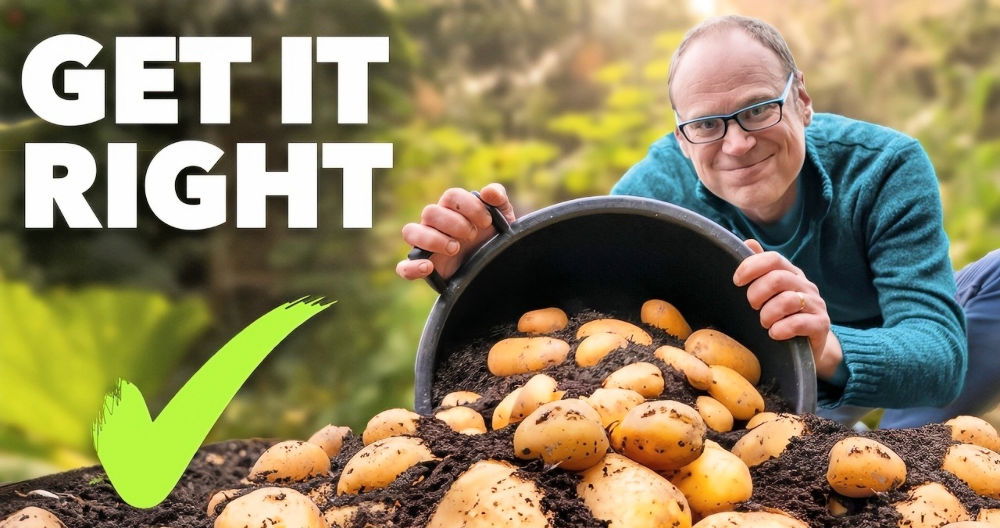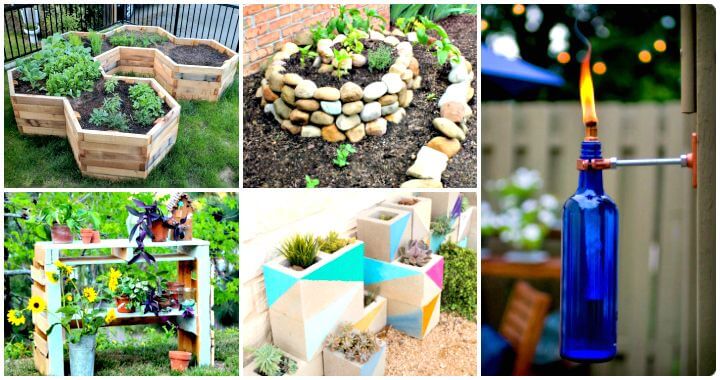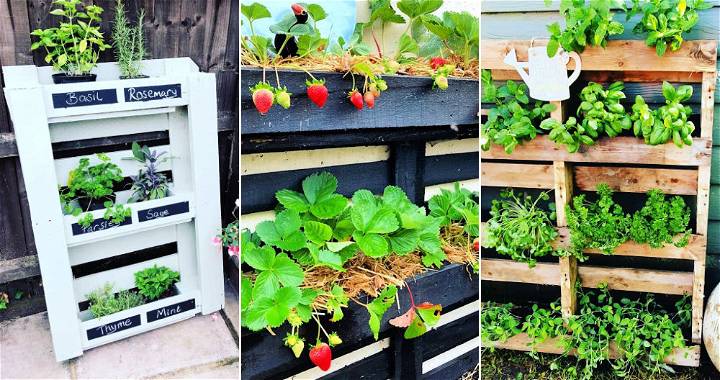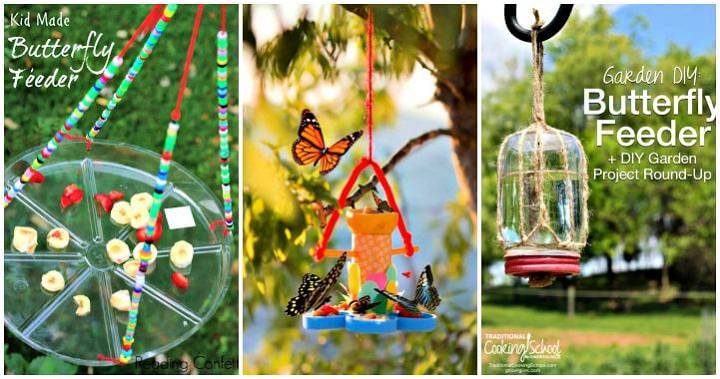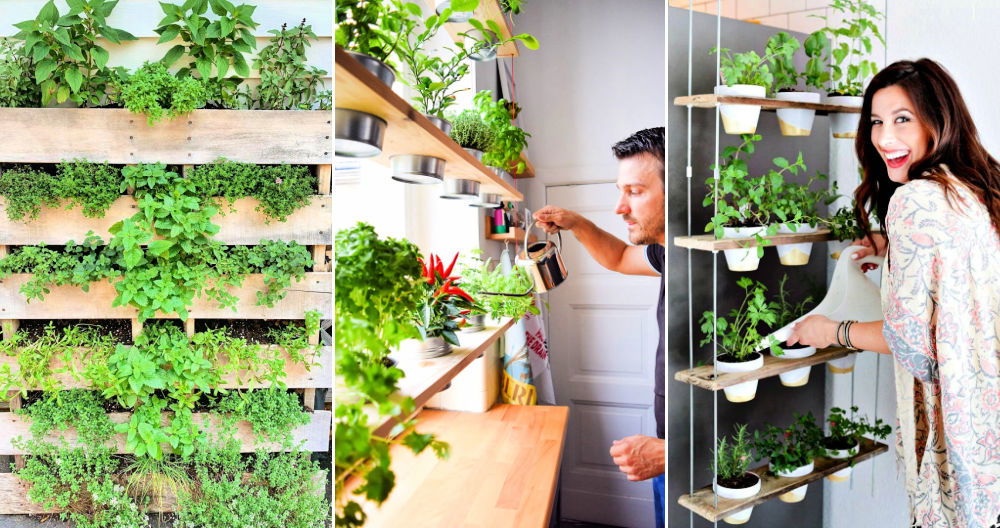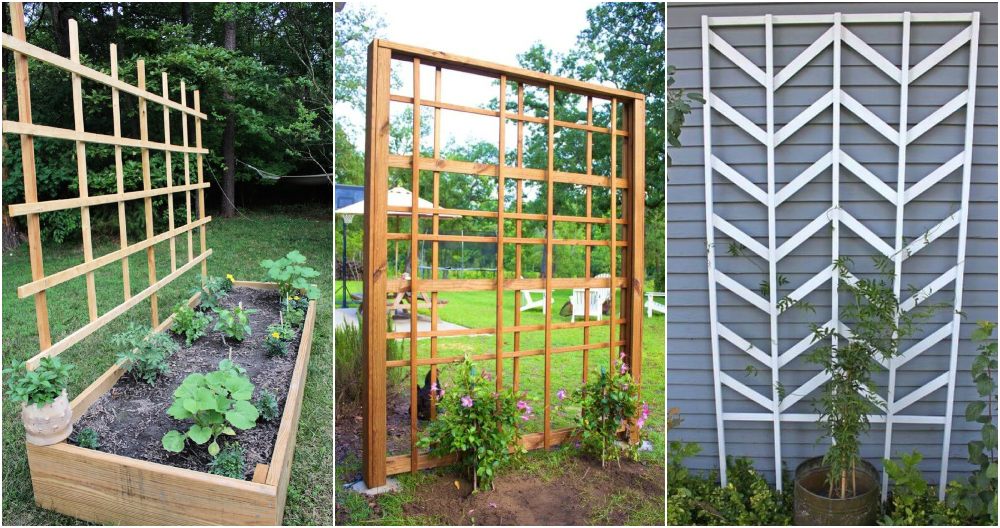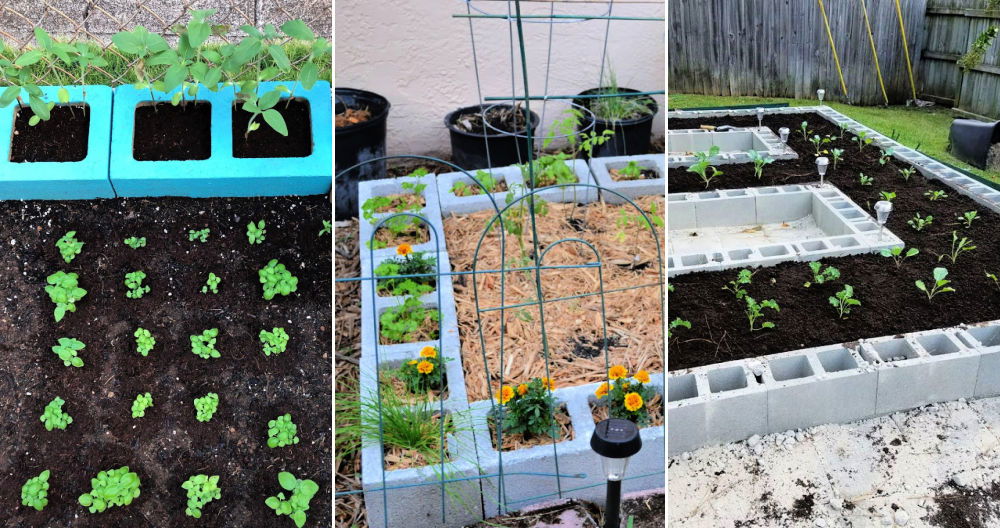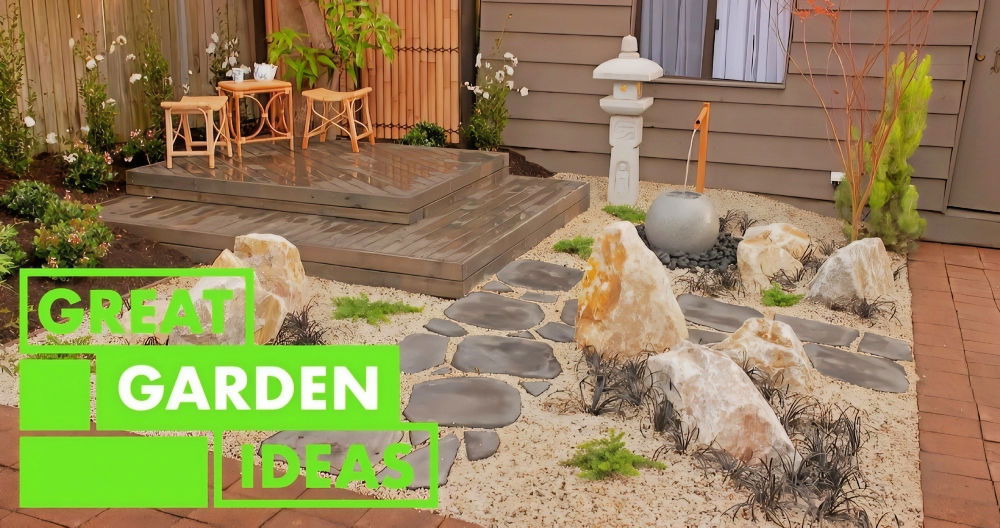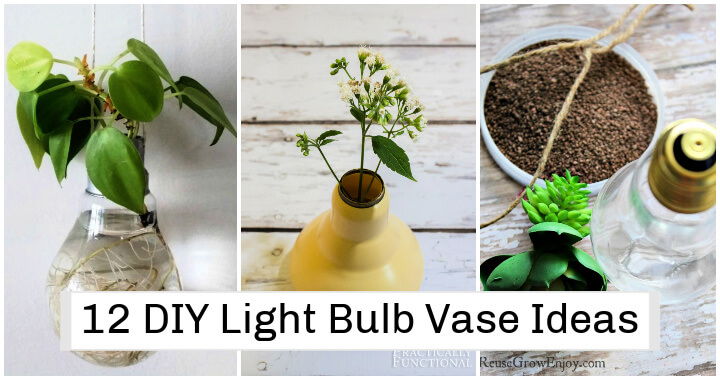Garlic is a fantastic crop that not only adds flavor to your kitchen but is also relatively easy to grow, requiring minimal maintenance and space. Autumn and winter are ideal for planting garlic, making this guide perfect for preparing your garden. Whether you're looking to grow garlic for fresh use, curing for long-term storage, or aiming for self-sufficiency, these tips will help you achieve massive yields and flavorful results.
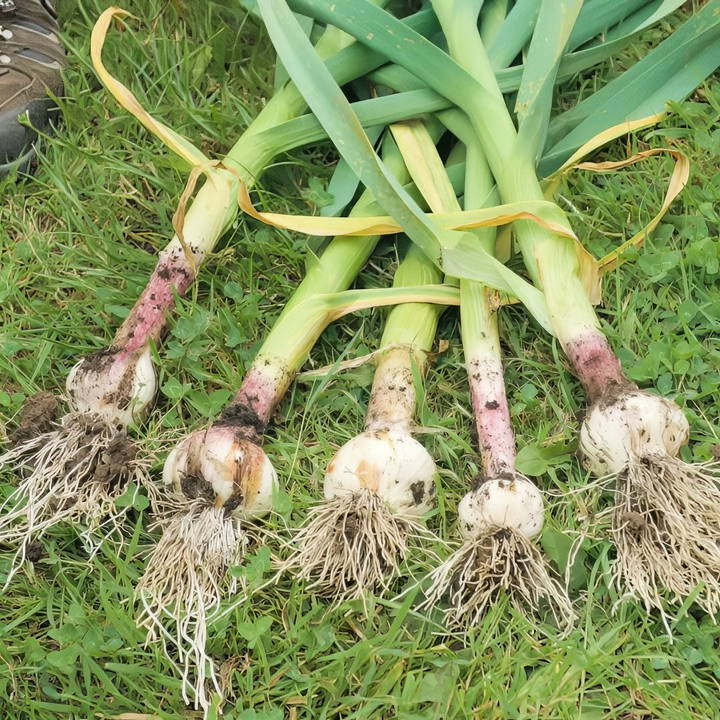
Why Grow Garlic?
Garlic is a hardy and resilient plant that adapts to various climates and requires minimal attention once planted. Home-grown garlic often boasts richer flavor than store-bought varieties, making it a favorite among gardeners. Garlic is also versatile, allowing you to enjoy it at different stages of growth.
Benefits of Growing Garlic
- Low Maintenance: Once planted, garlic requires little care.
- Space-Efficient: You can grow garlic in a small garden space.
- Health Benefits: Garlic is rich in antioxidants, vitamins, and minerals.
- Self-Sufficiency: Growing garlic can provide a year-round supply if harvested and stored correctly.
Step by Step Instructions
Learn how to grow garlic with step-by-step instructions. From planting to harvesting, managing diseases, and storing garlic for year-round use.
1. Understanding Garlic Varieties
Choosing the right type of garlic is essential for a successful harvest. There are three main types of garlic, each with unique characteristics:
- Hardneck Garlic: Known for its large cloves and robust flavor, hardneck garlic is better suited for cooler climates. It also produces garlic scapes (flowering stalks) that should be removed to encourage bulb development.
- Softneck Garlic: Preferred in warmer climates, softneck garlic has smaller cloves and a milder flavor. It generally stores longer than hardneck varieties, making it ideal for long-term storage.
- Elephant Garlic: Not a true garlic, but closely related, elephant garlic produces much larger bulbs and milder flavor. It's often grown as a perennial and requires similar care to garlic, but is better suited to more extensive gardening spaces.
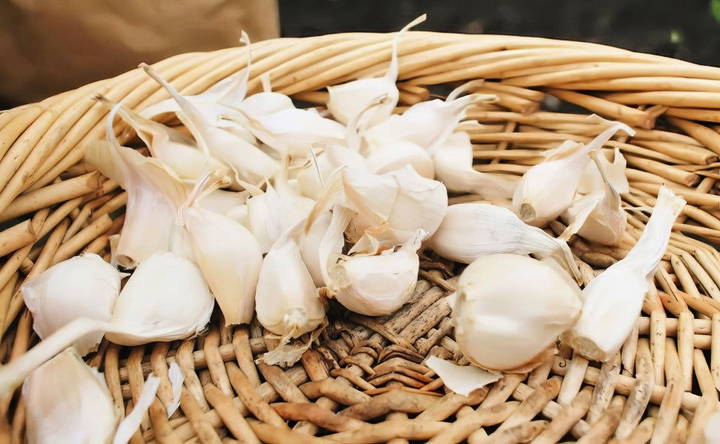
2. When to Plant Garlic
Timing is crucial for garlic planting. The ideal planting period is mid-October to mid-December. This window allows garlic to develop roots before the ground freezes while avoiding excessive growth that could make the plant vulnerable to harsh winter weather. Aim to plant garlic before December to avoid stunted growth due to late planting.
3. Preparing the Planting Bed
Garlic thrives in loose, well-draining soil rich in organic matter. Follow these steps for optimal bed preparation:
- Clear the Bed: Remove previous crops, weeds, or debris to create a clean area.
- Amend the Soil: Add a 2-3 cm (about 1 inch) layer of compost to enrich the soil and provide essential nutrients.
- Level the Bed: Lightly rake the compost into the soil, making a smooth, even surface.
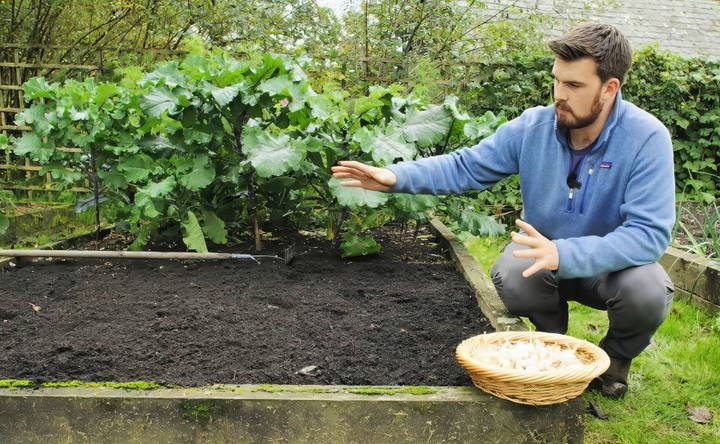
4. Planting Garlic
To plant garlic, break apart the bulb into individual cloves. Here's a step-by-step guide:
- Spacing: Plant cloves 7-10 cm (3-4 inches) apart, ensuring each clove has enough space to grow into a full bulb.
- Depth: Plant cloves 5-6 cm (2 inches) deep, with the pointed end facing up.
- Planting Technique: For efficient use of space, consider a “diagonal offset” pattern rather than straight rows. This approach maximizes space, especially beneficial for small garden beds.
Once planted, garlic requires minimal intervention and will grow quietly over the next several months.
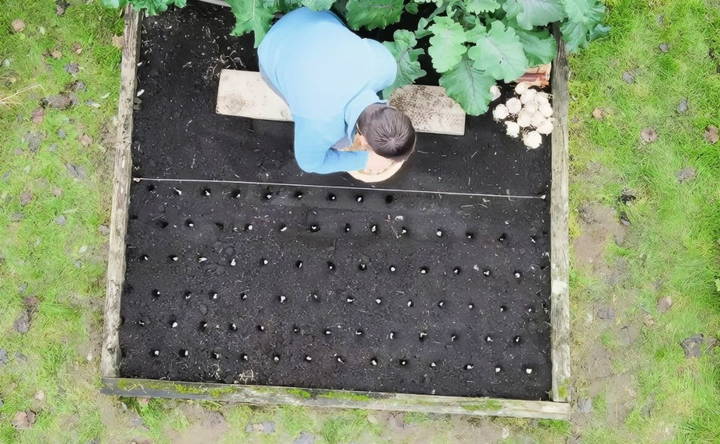
5. After Planting Care
Garlic is a low-maintenance crop, but a few key practices can ensure it thrives:
- Weeding: Regularly remove weeds to prevent competition for nutrients.
- Disease Prevention: Garlic can be susceptible to diseases like white rot and rust. To minimize risk, rotate garlic planting areas and spread your garlic across different garden locations.
- Watering: Garlic generally requires little water. However, during spring and early summer, ensure plants receive a heavy watering if there's no rainfall for over ten days.
6. Managing Garlic Diseases
Garlic can sometimes encounter white rot or rust. Here are quick solutions for each issue:
- White Rot: This soil-borne disease affects the Allium family (garlic, onions, leeks). Rotate garlic to a new area for 3-4 years to prevent reoccurrence.
- Rust: Rust is a common fungal infection. Remove affected leaves and manage soil health to prevent further spread. This condition generally resolves with minor intervention and good soil management.
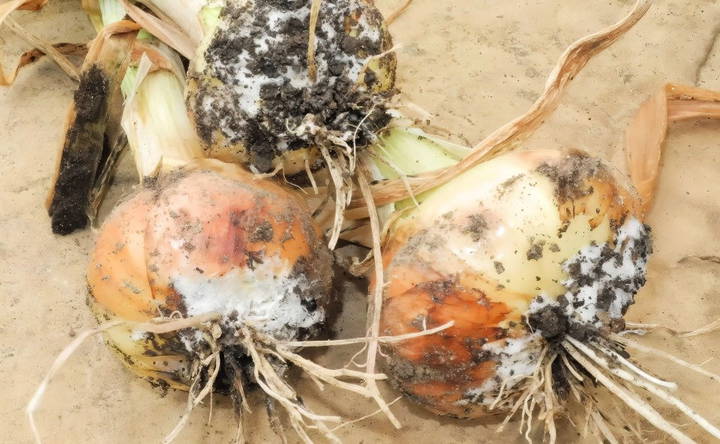
7. Harvesting Garlic
Knowing when to harvest is essential for maximizing flavor and storage potential. Garlic is typically ready for harvest when about 50% of the plant's leaves have turned brown. This usually falls between late June and mid-July.
For those eager to enjoy garlic earlier, you can harvest it as green garlic. This is essentially garlic harvested prematurely, which you can use in cooking for a mild garlic flavor. Both the bulb and stem are edible, making it a versatile addition to spring dishes.
8. Post-Harvest Care and Curing
Proper curing is essential for long-term storage. Follow these steps:
- Dry in the Sun: Leave freshly harvested garlic to dry in direct sunlight for a full day.
- Move Indoors for Further Drying: Transfer garlic to a warm, dry, and airy space (e.g., a shed or garage). Hang it in bunches or lay it out on a single layer for 4-6 weeks.
- Trim and Store: Once cured, cut off the leaves, leaving about 3-5 cm (1-2 inches) of stem. Store cured garlic in a cool, dark, and airy location. Softneck garlic can last 9-12 months, while hardneck varieties typically last 4-6 months.
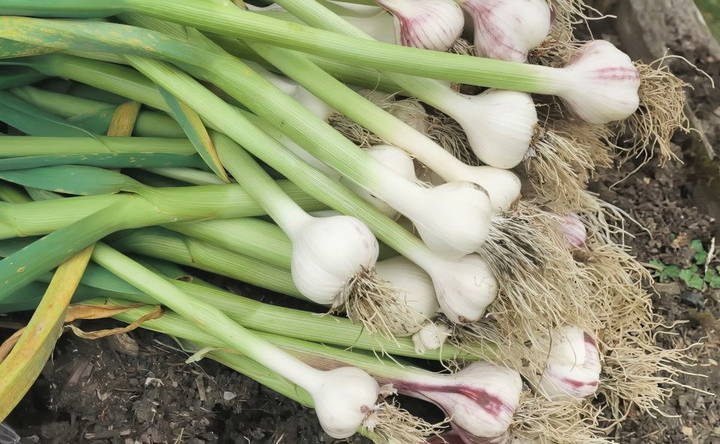
9. Storing Garlic for Year-Round Use
To preserve garlic for long periods, you can also consider these additional storage methods:
- Wet Garlic: Use garlic fresh without curing. Wet garlic is easy to peel and has a tender, mild flavor.
- Honey Garlic Fermentation: Submerge garlic cloves in honey for a fermented garlic treat that can last up to a year. This not only preserves the garlic but also enhances its flavor and health benefits.
10. Succession Planting with Garlic
To maximize garden space, consider succession planting with dwarf beans immediately after harvesting garlic. Start the beans about 3-4 weeks beforehand in small pots, and transplant them into the garlic bed once it's cleared. This approach allows you to harvest two different crops from the same plot within a single season.
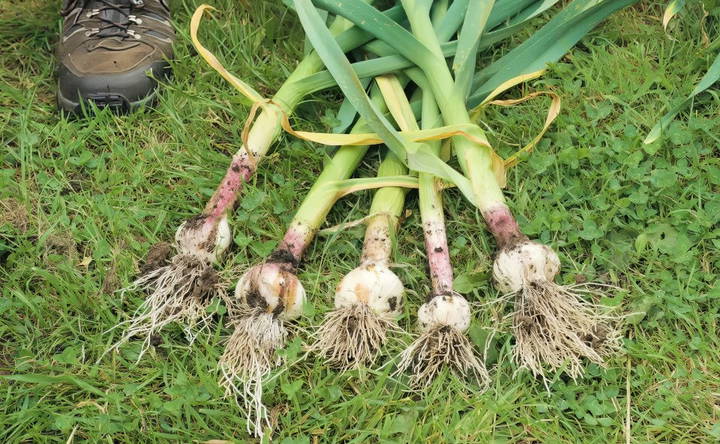
Tips for Self-Sufficiency in Garlic
If you aim to grow enough garlic to last through the year, calculate your planting based on your household's usage. For example, if you use a bulb of garlic weekly, you'll need around 52 bulbs annually. Planting accordingly ensures you'll have enough garlic for daily use, storage, and even gifts.
Calculating Your Planting Needs
Estimate your garlic needs by multiplying the bulbs used weekly by 52 weeks. This will give you a baseline for the quantity you need to plant to achieve garlic self-sufficiency.
Troubleshooting Common Issues
Here are common challenges gardeners face when growing garlic, along with solutions:
- Poor Growth: If bulbs don't develop well, consider testing and amending your soil. Garlic prefers loose, well-drained soil with plenty of organic matter.
- Small Bulbs: Lack of spacing or inadequate sunlight can lead to small bulbs. Ensure garlic gets full sun exposure and sufficient space to grow.
- Pests and Diseases: Crop rotation, disease-resistant varieties, and proper spacing reduce the risk of issues like rust and white rot.
Key Takeaways for Growing Garlic
Growing garlic is rewarding and straightforward, especially when you follow these essential tips:
- Choose the Right Variety: Select hardneck for cooler climates and softneck for warmer areas.
- Plant in the Right Season: Mid-October to mid-December is the ideal planting window.
- Maximize Space: Use a diagonal offset pattern for efficient planting in small gardens.
- Water Sparingly: Water only during extended dry spells to prevent over-watering.
- Harvest at the Right Time: Wait until half the leaves are brown before harvesting.
- Cure for Long-Term Storage: Properly dry and cure garlic to store for up to a year.
By following these steps, you'll be on your way to enjoying homegrown garlic with rich, robust flavors that store well and enhance your cooking all year long.
FAQs About Garlic Growing Tips and Troubleshooting
Discover essential FAQs about garlic growing tips and troubleshooting, covering planting, care, pest control, and common garlic-growing issues.
For most climates, plant cloves about 2 inches deep. In regions with harsh winters (e.g., Canada), plant 4-5 inches deep to prevent frost damage. Mark planting depth on a stick to ensure consistency.
Yes, but ensure the garlic is organic. Grocery store garlic may not grow as well as bulbs from a nursery, which are usually hardier and disease-free.
Yes, many gardeners successfully grow garlic alongside beans and other crops, especially if they rotate these crops each season. This can also help with pest management.
Rust is common on garlic leaves. Remove severely affected leaves and consider applying lactic acid bacteria as a preventive measure. Good air circulation and crop rotation also help reduce rust incidence.
Garlic grows best in full sun, but it can tolerate partial shade, ideally at least 4 hours of direct sunlight daily. Less light may reduce bulb size.
Store garlic in a cool, dark, airy space, ideally above 17°C (62°F). Avoid storing in areas with high humidity or in direct sunlight to prevent premature sprouting.
If garlic sprouts prematurely, it will likely pause growth in winter and resume in spring. Mulching can help insulate and protect young shoots until spring temperatures rise.
In the Southern Hemisphere, plant garlic in late autumn, around March or April, so it establishes roots before winter.
Yes, garlic benefits from a balanced, organic fertilizer high in nitrogen during its early growth stages. Top-dress with compost or well-rotted manure for added nutrients.
Softneck garlic can be braided for storage, as it has a flexible stalk and can last 9-12 months when stored properly. Hardneck varieties don’t braid well and generally store for 4-6 months.
White rot shows as yellowing leaves and rotting roots. It's best to avoid planting garlic in the same area for at least 10 years if affected, as white rot spores persist in the soil.


